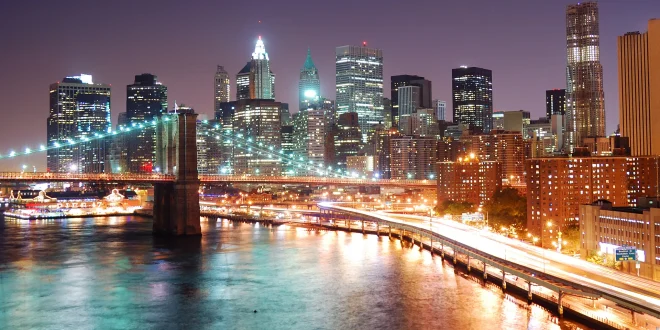New York City is one of the most iconic cities in the world, known for its rich history, towering skyscrapers, and vibrant culture. But how much do you really know about the history of this great city? Whether you’re planning to visit soon or are simply fascinated by its past, this guide will take you on a journey through the History of New York City and provide some helpful tips for visitors.
1. Introduction to New York History
New York City didn’t always have its iconic skyline or millions of residents. It started as a humble settlement, and over the centuries, evolved into the bustling metropolis we know today. Its history is packed with stories of resilience, innovation, and diversity. So, what exactly shaped this city, and why does it remain so significant today?
2. The Early Beginnings: Native Americans and Dutch Settlers
Long before skyscrapers, Wall Street, or Broadway, the area now known as New York was home to the Lenape Native Americans. The Lenape thrived here for centuries, living off the land and the waters surrounding the island of Manhattan.
In 1609, Henry Hudson, an Englishman sailing for the Dutch, arrived in New York Harbor, marking the beginning of European colonization. By 1624, the Dutch had established New Amsterdam, a trading post on the southern tip of Manhattan. This tiny settlement would eventually become one of the most important cities in the world.
3. The British Takeover and the Birth of New York
In 1664, the British seized control of New Amsterdam without firing a shot, renaming it New York in honor of the Duke of York. This event was pivotal in shaping the city’s future, as it transitioned into a hub for trade and commerce under British rule.
Did you know that New York was the first capital of the United States in 1789? Even after it was no longer the nation’s capital, New York retained its reputation as a leading city in politics and culture.
4. New York During the American Revolution
New York played a crucial role during the American Revolution. It was the site of several important battles and served as the British headquarters for much of the war. The Battle of Brooklyn, fought in 1776, was one of the largest battles of the war. Despite being occupied by British forces for much of the conflict, the city’s resilience and strategic location helped shape the future of the United States.
5. The 19th Century: Immigration and Growth
The 19th century was a period of immense growth for New York City, fueled largely by immigration. Millions of immigrants from Europe passed through Ellis Island, seeking new opportunities in America.
This wave of immigration transformed the city, bringing new cultures, languages, and traditions. By the end of the century, New York was not just a gateway to America—it had become a cultural melting pot and a symbol of hope for millions.
6. The Skyscraper Boom and Industrialization
By the late 19th and early 20th centuries, New York City was experiencing an architectural revolution. The invention of the elevator and advancements in steel construction led to the skyscraper boom. Iconic buildings like the Empire State Building and the Chrysler Building began to reshape the city’s skyline.
The city also became an industrial powerhouse, with factories, railroads, and ports driving economic growth. As industries grew, so did the population, turning New York into the largest city in the United States by the 1920s.
7. New York City in the 20th Century
The 20th century brought both triumph and tragedy to New York. The city became a center for finance, arts, and media, but it also faced challenges such as the Great Depression, housing shortages, and high crime rates in the 1970s and 1980s. However, New York’s resilience shone through, and by the 1990s, the city had revitalized many of its neighborhoods, cementing its status as a global capital.
8. The Cultural Renaissance: Arts, Music, and Broadway
New York has always been at the forefront of cultural movements. In the 20th century, it became a beacon for artists, writers, musicians, and performers. Broadway, the Harlem Renaissance, and movements in jazz, hip hop, and punk rock all found a home in New York, making it a cultural epicenter.
9. Modern-Day New York: A Global Powerhouse
Today, New York City is a symbol of power, diversity, and innovation. It is home to global financial markets, world-class museums, universities, and corporations. Its influence reaches far beyond its borders, making it a trendsetter in everything from fashion to technology. Visitors flock to the city to experience its dynamic energy, whether they’re walking through Central Park, exploring museums like the Metropolitan Museum of Art, or admiring the view from the top of One World Trade Center.
10. Top Historical Sites to Visit in NYC
If you’re visiting New York and want to dive into its rich history, here are a few must-see historical landmarks:
- Statue of Liberty and Ellis Island: Explore the journey of millions of immigrants.
- The 9/11 Memorial and Museum: A solemn tribute to those lost during the September 11 attacks.
- Federal Hall: The birthplace of American democracy.
- The Tenement Museum: Learn about the lives of immigrants in the 19th and 20th centuries.
11. Tips for Navigating the City’s History as a Visitor
When exploring New York’s history, remember to:
- Wear comfortable shoes: New York is best explored on foot.
- Use public transport: The subway is a convenient way to get around.
- Plan ahead: Many historical sites require tickets, so book in advance.
12. Conclusion
New York’s history is the story of America. Its evolution from a small trading post to a global metropolis reflects the larger narrative of innovation, struggle, and opportunity that defines the nation. Whether you’re visiting for the first time or you’ve lived here all your life, understanding the History of New York City provides a deeper appreciation for its impact on the world.
 Diverse Perspectives: Insights & Stories Exploring Ideas, Sharing Knowledge
Diverse Perspectives: Insights & Stories Exploring Ideas, Sharing Knowledge





